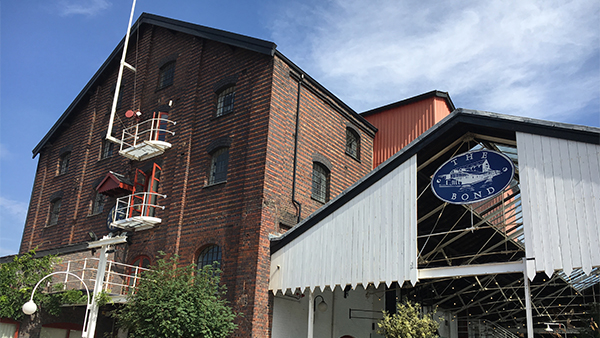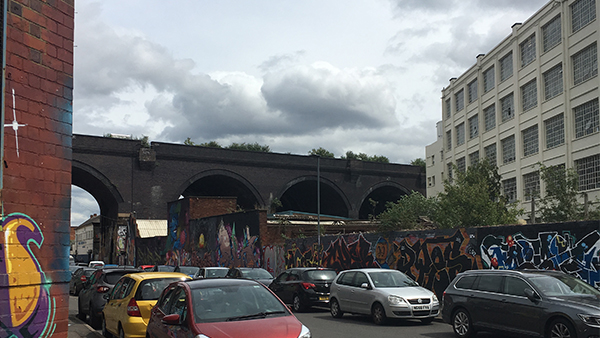News
30 September 2020
Digbeth: The Future is Creative
Building Brum event
What are you looking for?
Ahead of the Building Brum, Digbeth: The Future is Creative webinar next week, we take a look at the heritage history of the area.
Today, a number of buildings are statutorily and locally listed and much of the area is within a conservation area. This character and layering of heritage protection is generally consistent with other parts of Birmingham and indeed, other cities and towns across the country. Digbeth is, however, unique and its character and is not conventional in the true heritage sense.
The overriding character of Digbeth is variety; its varied ages of buildings ranging from the medieval period to the present day; its differing uses, with industrial remaining alongside an ever growing creative sector, retail, leisure and some small pockets of residential use; its varying roofscape of pitched, flat, parapets, gable ends and sawtooth roofs; its synonymy with street art as an expressive and dramatic form of public art that juxtaposes with the historic environment; and its diverse community with a creative and industrious spirit that has a strong identity with the local area.

Our Heritage and Townscape teams’ involvement at Digbeth has been to delve deeper into what makes the area important, both nationally and locally, and to provide a thorough and objective baseline heritage assessment upon which to understand the complex and diverse heritage of the area. Some of these intangible characteristics are difficult to identify and are not traditionally considered as important in relation to the historic environment. However, in Digbeth, these intangible elements add to the area’s layering and distinctiveness and contribute to its unique character. As with any area, the quality of the environment is not universal, and there are various generic and poor quality buildings which do not contribute positively to the areas character and thus provide an opportunity for new development. Our in depth assessment work considered all elements of heritage of Digbeth and has been subject to consultation with Birmingham City Council, Historic England and local amenity/ heritage groups.
Historic England’s own research describes Digbeth as ‘Cool, funky and beautiful, as well as dusty and noisy’, recognising that it’s not just the buildings that make this area unique. Our collaborative approach with Historic England enabled frank and open discussions about what contributes to the heritage of Digbeth to take place, with Historic England noting in these discussions that the proposals offer a positive opportunity to steer the future development of Digbeth in a considered and strategic way.

The baseline assessment led to the challenge of how to try and maintain those key characteristics, without diluting or eroding the attributes that define the character of Digbeth. The importance with any scheme covering such an extensive area like this, and with a long term ambition, is ensuring that a balance is struck between providing sufficient information for a planning application to be assessed and determined (against the relevant heritage legislation and policy), that there is sufficient flexibility for all parties, and that the planning permission can deliver a scheme that truly responds to the variety, distinctiveness and character of Digbeth.
For the Oval Estate, based on an underlying approach of creating a long term vision for the area, we have sought to achieve this through a number of methods including:
Overall, this approach helps avoid the creation of a homogenous architectural response and encourages creativity, akin with the uniqueness of the area. Our extensive research and analysis demonstrated that a ‘one size fits all approach’ is not appropriate here. The collaborative design, planning and heritage response taken has led to proposals which look to maintain the variety and distinctiveness of Digbeth, continuing its wide range of buildings and spaces which provide the foundations for a thriving, diverse community to continue to grow.
Find out more about what makes Digbeth a unique place and how its history and heritage will shape its future, register for the webinar on 24 September here.
17 September 2020
30 September 2020
Building Brum event